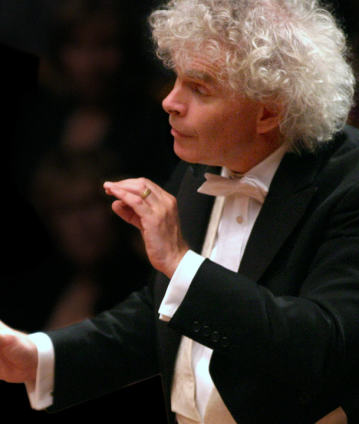Interview
Sir Simon Rattle à propos de l’interprétation des symphonies de Mahler (volet 2) Simon Rattle dirige la Cinquième de Mahler

La Symphonie n° 5 de Gustav Mahler doit sa popularité à son Adagietto, un mouvement plein de tendresse rêveuse, de langueur et d’espoir. Mais il serait dommage de négliger les autres facettes de cette partition, que ce soit la véhémence des deuxième et troisième mouvements ou l’exaltation exubérante du finale. Selon la presse, Simon Rattle a offert une interprétation « époustouflante » et « profondément émouvante » de la Cinquième.
Berliner Philharmoniker
Sir Simon Rattle
© 2011 Berlin Phil Media GmbH
Interviews liées au concert
Artistes
Nos suggestions
- Simon Rattle conducts Mozart and Strauss at the 2006 New Year’s Eve Concert
- Conclusion du cycle Sibelius avec Simon Rattle
- Simon Rattle dirige « La Petite Renarde rusée » de Janáček
- Dance project: Swing Symphony
- Tableaux symphoniques avec Sir Simon Rattle
- Beethoven et Mozart avec Simon Rattle et Mitsuko Uchida au Festival de Pâques